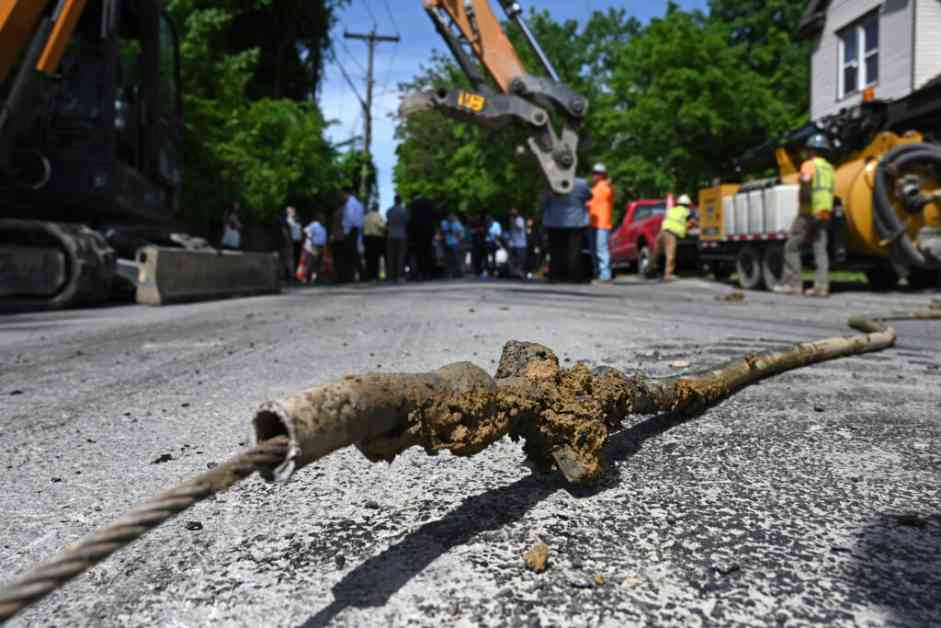A recent landmark Environmental Protection Agency (EPA) rule, enacted at the close of last year, aimed to combat the lead crisis threatening the health of millions of Americans by tightening restrictions on toxic lead and copper in drinking water. However, this regulatory move may not be the final word on the matter.
U.S. Rep. Gary Palmer (R-Ala.) introduced a resolution in the previous month to block the rule and permanently prevent the EPA from issuing a similar regulation in the future. Utilizing the Congressional Review Act, which allows Congress to vote to overturn a rule finalized late in a previous session, Palmer seeks to halt the EPA’s efforts.
The EPA’s action, solidified in October, entailed reducing the allowable levels of lead in drinking water and enhancing the requirements for lead service line replacement. Medical and public health experts emphasize that there is no safe level of lead in the human body. Lead service lines have long been identified as a primary cause of lead poisoning, yet an estimated 9 million lead service lines in the United States still deliver water to more than 22 million individuals.
### Concerns and Advocacy Surrounding the Rule
Despite the resolution’s lack of co-sponsors and limited advancement beyond its introduction in the House, advocates are taking it seriously due to the vast implications of the Congressional Review Act. Mary Grant, director of Public Water for All at Food & Water Watch, expressed deep concern that the EPA may be restricted from mandating comprehensive lead service line replacements in the future.
Grant and other experts warn that exposing more Americans to lead could have catastrophic consequences for public health, particularly impacting children and vulnerable populations. Julian Gonzalez, a senior legislative counsel and lead lobbyist on water policy for Earthjustice, highlighted the potential health risks associated with weakened drinking water regulations.
### Implications of Lead Exposure and Climate Change
Lead in drinking water poses significant health risks, including cardiovascular problems, kidney damage, reproductive health issues, and severe symptoms in children. The effects of climate change further exacerbate these dangers, with lead levels peaking during hotter periods, potentially increasing the risk of lead exposure as heat waves become more frequent.
While regulatory efforts have reduced lead exposure from various sources over the years, a significant portion of the U.S. population still faces lead contamination. Yanna Lambrinidou, a medical ethnographer and advocate for clean water, shared her personal experience living in a community affected by a lead crisis, underscoring the challenges of protecting children from lead exposure.
### The Role of Regulations and Advocacy
Efforts to eliminate lead from drinking water have garnered broad support across party lines. Public support for initiatives like lead pipe replacement within a specific timeframe is high, reflecting a shared desire for safe, lead-free water. Grant emphasized the importance of focusing on lead service line replacements as a key strategy to reduce lead exposure.
The potential reversal of the EPA rule could have lasting consequences, as it may reinstate previous regulations that environmental advocates deemed insufficient. The Lead and Copper Rule Improvements (LCRI), enacted in 2024, were seen as a step forward in addressing lead contamination. However, challenges related to affordability and implementation have been raised by water utilities and advocacy groups.
States and water utilities can leverage funding from the Bipartisan Infrastructure Law to support lead service line replacements, but concerns remain about the accessibility and distribution of these resources. Advocates stress the importance of prioritizing both safe and affordable water for all communities, highlighting the need for federal support in replacing lead service lines.
### The Future of Safe Drinking Water
As discussions continue around the resolution to reverse the EPA rule, the potential impacts on water utilities and communities remain uncertain. Advocates have urged lawmakers to prioritize safe drinking water and equitable access to resources for lead service line replacements. The intersection of public health, environmental justice, and regulatory policies underscores the ongoing challenges in ensuring clean and safe water for all Americans.














